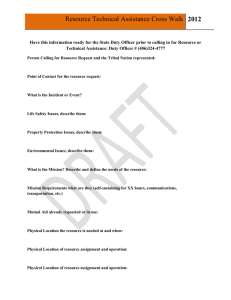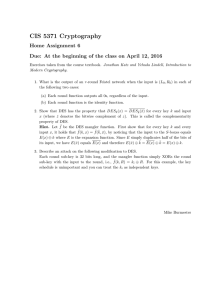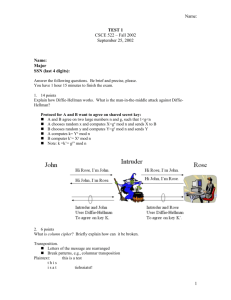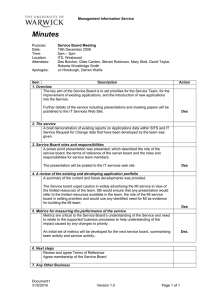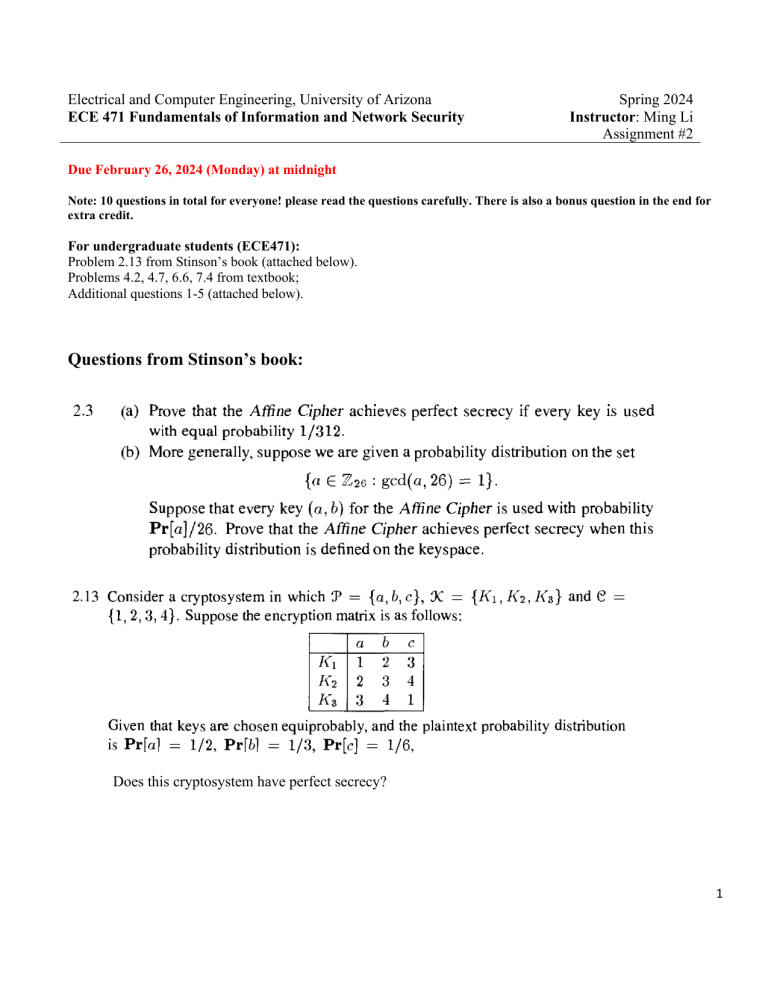
Electrical and Computer Engineering, University of Arizona ECE 471 Fundamentals of Information and Network Security Spring 2024 Instructor: Ming Li Assignment #2 Due February 26, 2024 (Monday) at midnight Note: 10 questions in total for everyone! please read the questions carefully. There is also a bonus question in the end for extra credit. For undergraduate students (ECE471): Problem 2.13 from Stinson’s book (attached below). Problems 4.2, 4.7, 6.6, 7.4 from textbook; Additional questions 1-5 (attached below). Questions from Stinson’s book: Does this cryptosystem have perfect secrecy? 1 Additional questions for all students (problems 1-5): Problem 1: If the useful life of DES was about 20 years (1977-1999), how long do you predict the useful life of AES (128-bits key) to be? Justify your answer. (Hint: you may need to consider the Moore’s Law (Google it) in order to answer this problem.) Problem 2: What is the output of the first round of DES when the plaintext and the key are both all zeros? What if the plaintext and the key are all ones? (Complete details of each DES round can be found in the textbook appendix S, or here: http://page.math.tu-berlin.de/~kant/teaching/hess/krypto-ws2006/des.htm ) Problem 3: An important property which makes DES secure is that the S-boxes are nonlinear. Verify the nonlinearity of the S-boxes by computing the output of box S1, for three pairs of inputs. Then show that S1 (x1 ) S1 (x2 ) S1 (x1 x2 ) for a. x1 = 000000, x2 = 000001 b. x1 = 111111, x2 = 100000 c. x1 = 101010, x2 = 010101 The first S-Box is shown below: Problem 4: Assume that bit 57 of a 64 plaintext block is 1 with all other bits equal to zero. Let the key be all zeros. a. How many S-boxes get different inputs compared to the case of an all-zero plaintext, in the first round of DES? b. What is the number of output bits which are different compared to the input after the first round? c. How many output bits have actually changed after the first round compared to the case of an all-zero plaintext (consider only one round). Does DES exhibit the avalanche effect (small changes in the plaintext yield significant changes in the ciphertext)? Do not forget to apply the initial permutation on the plaintext before passing it through the DES round. Problem 5: Consider the following alternative method of encrypting a message. To encrypt a message, use the algorithm for doing a CBC decrypt. To decrypt a message, use the algorithm for doing a CBC encrypt. Would this work? What are the security implications of this, if any, as contrasted with the “normal” CBC? 2 Bonus Question for all (10% extra points): Problem 6: Find keys K such that DES K ( DES K (x )) = x, x Such a key is sometimes called a “weak” key. How many weak keys can you find? To solve this problem you need to look up the exact key schedule generation algorithm for DES. For details refer to http://page.math.tuberlin.de/~kant/teaching/hess/krypto-ws2006/des.htm (Show your work or you will receive zero credit!) 3

